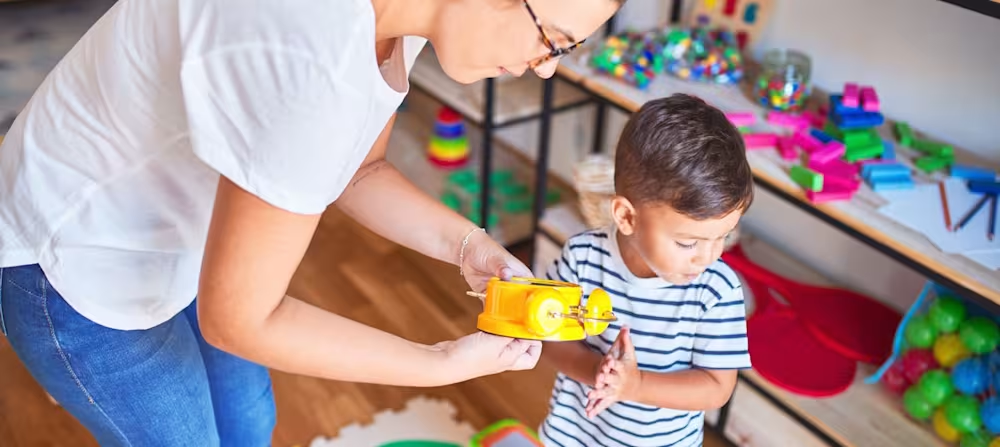The joy of nature: Outdoor activities for children
Updated Jan 02, 2026

We all know that getting our little ones out in the great outdoors works wonders – it means a break from screens, less chaos inside the house, and worn-out kiddos. But guess what? The benefits of nature time are even more incredible than we thought!
The impact of nature on children's well-being
The benefits of outdoor activities for children, according to research, include improved cognitive, mental, emotional, and physical health [, , , , ]. We’re talking about improved focus, less stress, increased academic performance, and improved physiological health.
We would be remiss not to also mention that exposure to outdoor sunlight is one of the most powerful factors in improving sleep []! Exposure to morning and evening sun helps to shape our natural internal body clock, which assists in priming our bodies for sleep. Score!
The fascinating fact about exposure to sunlight is that it increases vitamin D levels in the body, something that research suggests regulates our circadian rhythm, or internal body clock. More research needs to be done to determine exactly how vitamin D regulates our sleep; however, we do know that people who are deficient in vitamin D often experience sleep disorders, shorter sleep duration, and more frequent night waking [, , ].
When it comes to childhood health issues, research has shown that spending more time in nature can alleviate many of these problems, including diabetes, obesity, and depression []. However, despite the research and intuitive knowledge that nature is overall good for our kids, there is an increasing concern about children in America’s reduced exposure to nature, which appears to be trending downward [].
Exploring the great outdoors: Fun and engaging activities for kids
Now that we know that spending quality time in nature is the way to go, let us help you with some creative ideas to encourage being outdoors:
Try a nature scavenger hunt!
Task your children with finding common items such as a worm, a dandelion, a rock the size of a marble, an acorn, and a tree that is as tall as a house.

Go hiking and check out nature trails.
Local hiking and nature trails are a great way to run some energy out of the kids, spark some creativity, and engage the imagination. Pretend you are pirates searching for buried treasure at the end of your hike. Ahoy!

Start bird watching.
Did you know that every state has an official state bird? Make it your mission to learn about the local birds in your region. From the sound of their song, to what they prefer to eat, there is a lot to learn!

Take up gardening and planting.
Consider planting a garden for the children to tend to and watch grow. It’s a great way to get the family involved — a plus being your kiddos can help grow their own food!

Take your arts and crafts outside!
Painting rocks, creating a stick house, and creating a bouquet of wildflowers and leaves are all wonderful ideas for your little ones.

Overcoming barriers to outdoor activities for children
We know how challenging it can be for parents to prioritize getting outside with their children. Sometimes it can feel like there are just too many barriers in the way.
Spending time in nature with your children has countless benefits. Not only does it promote a healthy lifestyle, but it also has mental health benefits. It can improve mood, reduce stress levels and anxiety, and even promote better school performance. Plus, it's a fantastic way to bond with your children and create lifelong family memories.
We understand that there are various barriers that may make it difficult to find time to get outside. City living, busy schedules, and screen time can all make it challenging to prioritize outdoor time with your kids.
But the good news is, there are practical and proactive solutions to overcome these barriers. Active planning can help you carve out time to get outside, even if it's just a short walk after dinner. Utilizing tools like “” (which challenges parents to attain 1000 hours of outdoor time per year with their children, providing tracking sheets and ideas for day-to-day planning) and the can help inspire you and keep you accountable for getting outside.
Here are some ideas to overcome common barriers to spending more time in nature:
Barrier #1: Not enough time.
Dedicate time every weekend for unstructured time so that there is room for at least 1 hour of outdoor activity. This could be as simple as taking a family walk. Utilize our in the Huckleberry app - choose the activity, “outdoor play”, and it can be tracked either by using a timer or by simply logging if they did the activity or not.
Barrier #2: We live in a city.
Many people perceive outdoor activities as a big adventure, such as hiking Yellowstone National Park or going on a camping trip. Remember that spending time outdoors can be as simple as playing in your local park, taking a walk, or spending time on the patio or backyard.
Barrier #3: Kids aren’t interested.
It can help to find other committed families to participate in outdoor activities to reinforce the joy and fun that nature can provide. Play dates, competitive scavenger hunts, and outdoor games are all ways to motivate children who’d rather stay inside.
Takeaway
Exposure to nature has numerous benefits for children, including a break from screen time and less indoor mess (mostly for caregivers!).
Research shows that outdoor activities significantly improve children's cognitive, emotional, mental, and physical health.
Benefits include enhanced focus, reduced stress, better academic performance, improved sleep quality, and alleviation of health issues like diabetes, obesity, and depression.
Outdoor activities recommended to connect children with nature:
Nature scavenger hunts with tasks like finding specific items.
Hiking on local trails to expend energy, spark creativity, and engage the imagination.
Bird watching to learn about local bird species.
Gardening involves children in tending and observing growth.
Outdoor arts and crafts like painting rocks and making bouquets of wildflowers.
Outdoor activities for children FAQ
Share article:
Note: The content on this site is for informational purposes only and should not replace medical advice from your doctor, pediatrician, or medical professional. If you have questions or concerns, you should contact a medical professional.











